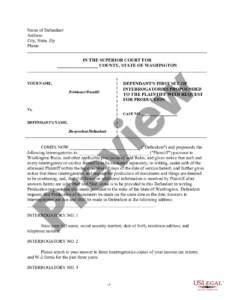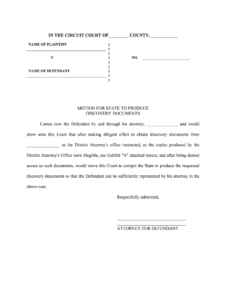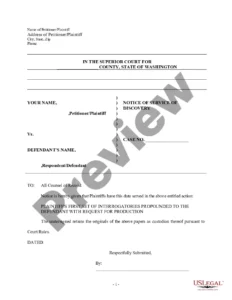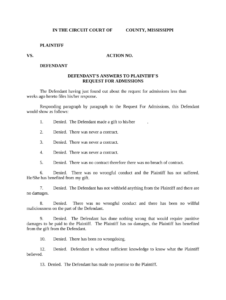Employing established models for these inquiries offers numerous advantages. Standardized formats promote clarity and consistency, reducing ambiguity and the potential for misinterpretation. They ensure all essential elements are included, minimizing the need for revisions or supplemental requests. This efficiency streamlines the discovery process, contributing to a more focused and cost-effective resolution of legal matters.
The subsequent sections will delve into the specific components of these valuable tools, offering practical guidance on their effective utilization and highlighting best practices for both requesting and responding parties. This information aims to facilitate a smoother, more efficient discovery process for all involved.
Key Components of a Standardized Discovery Request Form
Effective use of standardized forms for written inquiries necessitates a clear understanding of their core components. These elements ensure clarity, completeness, and adherence to legal procedures.
1. Caption: The caption identifies the court, case name, and case number, ensuring proper identification and filing.
2. Introductory Statement: This section clearly states the purpose of the request and identifies the party making the request and the party required to respond.
3. Definitions and Instructions: Clear definitions of key terms and specific instructions for responding ensure consistent interpretation and accurate answers.
4. Interrogatories: These are the specific questions posed to the responding party. They should be numbered, concise, and relevant to the legal matter at hand.
5. Signature Line: The signature of the requesting party’s attorney certifies the validity and propriety of the request.
6. Certificate of Service: This confirms that the request has been properly served on the opposing party, fulfilling legal notification requirements.
7. Space for Responses: Sufficient space should be provided for the responding party to provide their answers under oath.
Adhering to these structural elements promotes clarity, reduces ambiguity, and facilitates a more efficient and effective discovery process, contributing to a just and timely resolution of legal disputes. Careful attention to each component ensures the integrity and legal validity of the information exchanged.
How to Create a Standardized Discovery Request Form
Creating a well-structured form for written inquiries is essential for efficient legal discovery. Adherence to established best practices and attention to detail ensure clarity, completeness, and legal validity.
1. Consult Legal Resources and Rules: Begin by reviewing relevant jurisdictional rules and regulations governing discovery procedures and formatting requirements. Utilize available sample forms and legal guides for formatting guidance.
2. Draft the Caption: Accurately identify the court, case name, and case number in the caption to ensure proper filing and identification.
3. Craft a Clear Introductory Statement: State the purpose of the request, identify the requesting and responding parties, and specify the deadline for responses.
4. Define Key Terms and Provide Instructions: Include a section defining potentially ambiguous terms and providing clear, concise instructions for responding.
5. Formulate Specific, Relevant Interrogatories: Draft concise, numbered questions directly related to the legal matter. Avoid vague or overly broad inquiries.
6. Include Signature and Certificate of Service Sections: Ensure designated spaces are provided for the attorney’s signature and the certificate of service, affirming proper service on opposing counsel.
7. Allocate Sufficient Space for Responses: Provide ample space for the responding party to provide complete and legible answers to each interrogatory.
8. Review and Revise: Carefully review the completed document for accuracy, completeness, and adherence to all applicable rules and regulations before service. Seek legal counsel if necessary.
Meticulous preparation of these documents contributes significantly to a smoother and more efficient discovery process. Accurate information, clear instructions, and adherence to established procedures promote clarity and facilitate the timely resolution of legal matters.
Standardized forms for legal inquiries play a crucial role in the discovery process, providing a structured framework for obtaining essential information. Understanding their key components, including the caption, introductory statement, definitions, interrogatories, signature lines, and certificate of service, is essential for effective utilization. Properly drafted forms, adhering to legal rules and best practices, promote clarity, efficiency, and completeness, contributing to a more focused and streamlined discovery process.
Leveraging these standardized tools empowers legal professionals to navigate the discovery phase more effectively, contributing to a just and timely resolution of legal disputes. Continued adherence to established best practices and ongoing adaptation to evolving legal landscapes will ensure these tools remain valuable assets in the pursuit of truth and justice.



